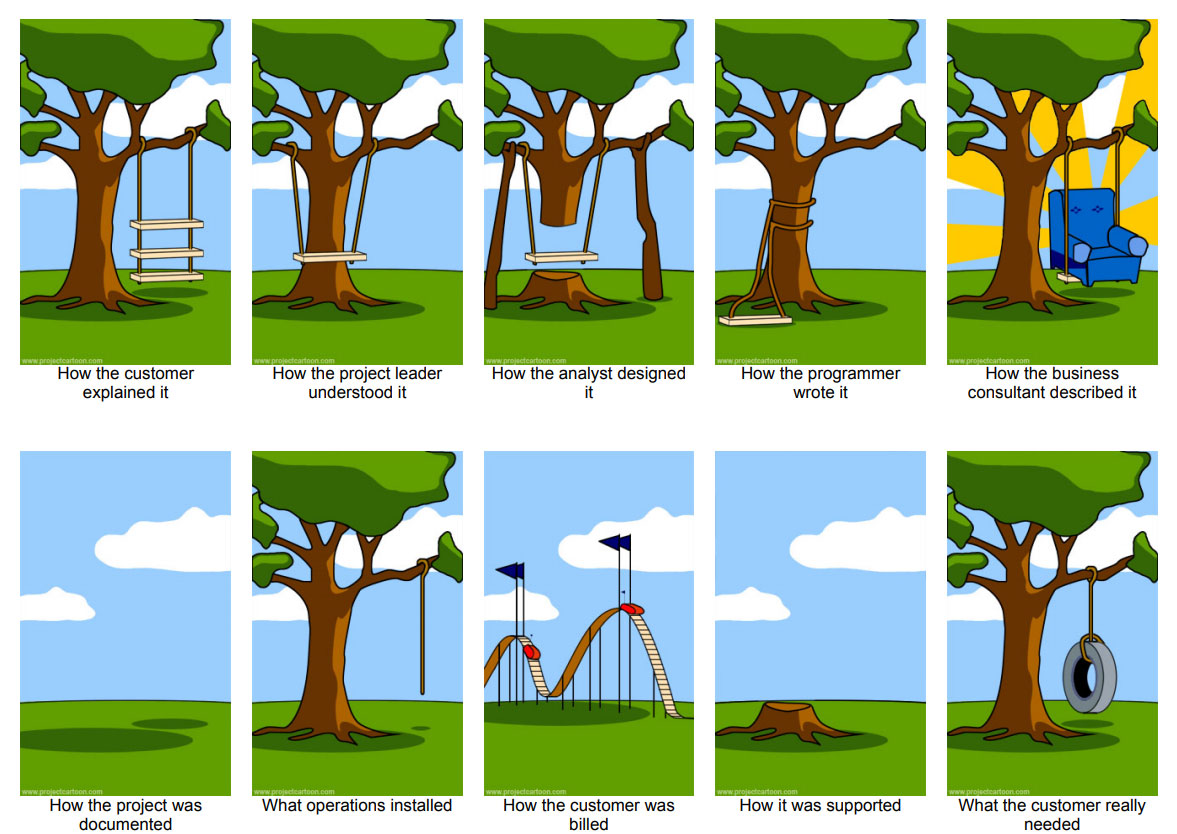Project Management in Web Design: Methodologies and Frameworks
Diving into the pool that is Project Management in Web Design can be a bit of a daunting one! 🤿 So for the sake of this article and my sanity! We are going to start by just dipping our toes in the water.
When I first started my research into project management methodologies in website design, I couldn't believe how many there were! I even tried to google exactly how many there were, but there wasn't really a clear answer. There were however 5 or 6 popular methods that kept coming up, so those are the ones I am going to look at for this article.
What Are Project Management Methodologies?
Let's start by asking the most important question...what does project management methodology actually mean?
A project management methodology is a collection of principles, methods, techniques, and processes that are used to initiate, plan, and execute a project. Sounds simple!
You may also read about the term framework though, which is a set of project management processes that are used to initiate, plan and execute a project. Now I'm confused!

It took a lot of reading 👀 to wrap my head around this one! But what I gathered is that methodology is a way to systematically solve a problem, whereas a framework is a foundation that is built upon to solve said problem. This will make a bit more sense when we get into some of the methodologies and frameworks below.
Just to add a bit of history into the mix before we move on...Project management activities have taken place over thousands of years! I wonder what methodology the Egyptians used when they built the pyramids 🤔. Henry Gantt invented the Gantt chart around 1910-1915 which revolutionised project planning, but it wasn't until the 1950’s that we began to outline specific project methodologies and frameworks.
Project management methods and frameworks are constantly changing and evolving over time and new concepts appear regularly. During your life you will use more than one of the methods below, even if you don’t know you’ve been doing it!
What Are The Six Most Popular Methodologies And Frameworks?
There are a vast amount of methodologies and frameworks to choose from when web designing, so below I have picked 6 that I saw coming up time and time again.
Let's get started then...
Agile (Methodology)
Agile Project Management is all about breaking up a project into several phases and working through those phases iteratively until the project is complete. The idea of the Agile methodology is to deliver the project in small bite sized pieces. This means as you move along you are constantly evaluating and improving your processes to deliver the project faster and with fewer headaches! 🤯
Lean (Methodology)
The importance of the Lean project management methodology is identifying the value to the customer and making sure everyone is working towards the same goal.

Image Source: projectcartoon.com
When using the Lean methodology, client communication is essential. Constant communication allows project managers to clarify anything that is unclear, resolve conflicts and collaborate on ideas. A more streamlined approach to project management eliminates waste and increases client satisfaction.
Scrum (Framework)
Now when you see the word scrum your mind might head straight to rugby...🏉 In rugby a scrum is a method of restarting play in rugby that involves players packing closely together with their heads down while they attempt to gain possession of the ball. We can see where Scrum got its name!
Scrum is a form of Agile project management, therefore we should consider Scrum to actually be a framework. It involves using a small self-managed multidisciplinary team, which is led by a Scrum master. The scrum master essentially runs the projects and makes sure to remove any obstacles that might slow the rest of the team down.
The project is broken down into short cycles or sprints and the team meets daily to discuss each sprint; the current tasks and discuss potential upcoming roadblocks. These meetings are usually called stand ups.

Kanban (Framework)
Kanban is another framework that falls under the Agile methodology, but its processes can also be used by those using the Lean methodology. Kanban was developed by Taiichi Ohno, an industrial engineer at Toyota, to manage their manufacturing process more efficiently. My Yaris and I thank you Taiichi!
Kanban is about visualising the project to see a breakdown of tasks that are outstanding, in progress and complete. Kanban usually consists of a physical or digital board with 3 or more columns with tasks illustrated as cards that can be moved between columns depending on status.
The main goal of Kanban is to increase knowledge of work in progress, limit multitasking and eliminate waste. This is why it is often used for the Lean methodology.
Scrumban (Framework)
I think we can probably take a wild guess at what Scrumban is, but just in case.. Scrumban is a combination of both Scrum and Kanban frameworks. Scrumban involves applying the visual elements of Kanban and the flexible approach to the structured scrum method.
Waterfall (Methodology)
Waterfall project management is another methodology. Waterfall is often described as the most straightforward way to manage a project! Sounds good to me!
The Waterfall method is where a project is broken up into distinct phases which are laid out sequentially, so the next phase doesn’t begin until the previous phase has been marked as complete.
Waterfall involved using a team, each with a defined role, to complete each phase. Usually with the waterfall method, the phases are set and unlikely to change throughout the project.
The waterfall methodology is actually what we use for most of our website builds! We split each of our builds into 6 distinct phases. A phase is marked as complete when it is signed off and we move onto the next phase. You can see more about our 6 phase approach here.
How Do I Know Which Project Management Methodology To Use?
Now here’s a question.. What methodology you choose is entirely dependent on you, your team and the scope of the project. When you onboard your new project, choosing the type of methodology and framework you want to use is your first task! ✔️ There's a few things you can do to help you make your choice...
1. Consider your project
Firstly you need to start by thinking about the project you are about to undertake.
- What is the timeline like?
- What web development tools and people are available to you?
- How much communication are you able to have with the client for feedback and sign off?
Listing out the answers to these questions will really help in working out what methodology would be the most beneficial for your project.
2. Determine the projects flexibility
Is the project timeline and budget flexible? Or are you working with a fixed budget, timescale and requirements. Do you have the flexibility among the team and the client to approach the project in an agile way?
3. Think about your team, project goals and values
- What methodology and/or framework will bring the most value to the project, to increase customer satisfaction?
- What are the main goals for the project and ultimately what is trying to be achieved?
- What method best suits the team you are working with?
Have a think about the habits and opinions of your team and what methodology/framework works best for them.
These three key points can be used to determine which methodology and framework best suits you and your upcoming project. Once that’s decided, you might want to consider how you are going to keep track of the project and whether you might want to utilise a project management software.
Which Project Management Methodology Is Best?
As I've been doing my research it has become clear that there is no one size fits all approach to project management, so it’s important to remember that there is no ‘best’ project management methodology.
There are so many different methods and frameworks that people use, it is important to pick the one that is right for you and your project. Of course, there are popular ones that are used more than others, so it may be a good idea to consider one of these as there may be more resources and software available to you.
What Is The Best Project Management Software?
Now you know some of the project management frameworks available to you, it might be a good idea to take a look at different programs and software that can help you put them into practice and achieve your goals! 🏆

The benefits of using specifically designed project management software, are that it improves communication, prioritisation, and budget control. You can use it to track a project's process, allocate tasks and assign resources.
Using collaborative software is more vital than ever with the current climate and the increase in staff working remotely! It’s a much easier way to make sure everyone's on the same page.
Here are our top 3:
1. Hive
Hive takes project management to the next level, its an all-in-one project management software, that allows you to organise your projects, store data, assign tasks, and visualise your workload.
There are 6 different ways you can view a project in hive which includes: status, team, calendar, label, Gantt and table. Status view is like a Kanban breakdown of the project, so this is a useful tool if that is how you choose to manage your projects. Team, calendar, label and Gantt are also useful views if you are using the Kanban, Scrumban or waterfall methods.
2. Trello
Trello is a great contender for those who use the Kanban and waterfall project management methodologies.
Trello allows you to schedule projects and allows your team to quickly customise and create boards and workflows for just about anything! You can colour-code cards as well as attach documents and images. Team members can be added to boards to aid collaboration.

3. Asana
Asana is great for big or small projects. You can organise and assign tasks to teams or to individuals. You can also add dates to tasks and mark them in order of priority.
You can view your projects and workload as a timeline or on boards, which makes it a helpful bit of kit for most project management styles.
So, What's Next?
I have given you a brief intro to the world of project management methodologies and frameworks. If you want to find out more about project management and the other methodologies and frameworks available there are plenty of resources online to further your research!
If you are coming to us for a website build and you prefer to use a more Agile method to complete your project, then just get in touch and have a chat with the team!
And with that, I will take a sharp U-turn back to my swimming pool analogy...






